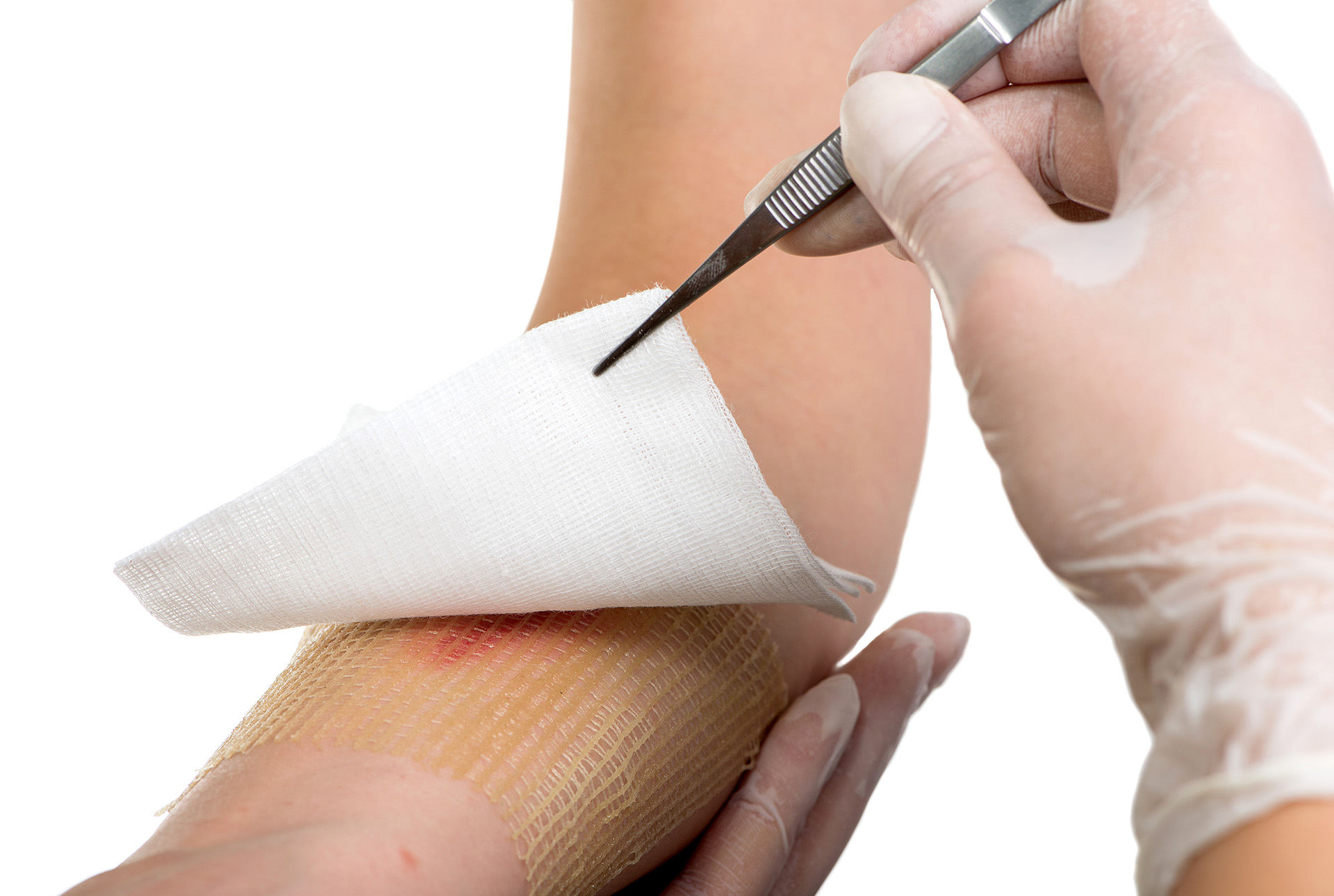SMALL INJURIES, BIG IMPACT
Even a seemingly minor injury like a small cut or burn can significantly impact workflow if not treated properly. If a chef in a commercial kitchen, for example, cuts their finger and continues to work, bacteria can enter the cut, causing an infection that might lead to a few days off work. Even short absences can disrupt schedules and increase pressure on colleagues.
Infections are a major concern when it comes to wounds. To avoid time off caused by infections, Lesley Barton, National Clinical, Quality and Governance Manager at Bunzl Australia and New Zealand, says, “Correct cleansing of the wound with saline is important. This assists with ensuring that any debris or foreign bodies are removed to facilitate healing. Then covering the wound with a dressing and not allowing the wound to dry out is crucial as this will slow down the migration of new healthy cells.”
First aid is a major factor in wound management. A well-dressed wound heals faster and lowers the risk of infection. If the correct comfort dressing is selected, it can also assist with allowing for productivity and reduce loss of time off work.
Lesley Barton, National Clinical, Quality and Governance Manager at Bunzl Australia and New Zealand
Prompt and effective treatment not only speeds up healing so extended absences are avoided but demonstrates to workers that their safety is taken seriously so they can work confidently knowing their wellbeing is a priority. Businesses that integrate proactive wound care and first aid practices into their safety culture – through well-stocked first aid kits, clear reporting processes, and accessible treatment options – can minimise disruptions and keep operations running smoothly. “When employees feel supported with proper first aid protocols,” explains Barton, “they’re more likely to report injuries early, preventing minor wounds from becoming major problems.”
SIMPLE STEPS FOR BEST PRACTICE WOUND CARE
Basic first aid can go a long way to reducing a workplace’s Lost Time Injury Frequency Rate (LTIFR). So whether it’s a minor cut or scrape, or a mild burn, following best practices can make a huge difference.
1 Wash your hands thoroughly before attending to a wound.
2 Rinse the wound under running water.
3 For a cut, stop the bleeding by applying direct pressure and raise and support the injured part above the level of the heart.
4 For a burn, keep the wound under running water for as long as possible.
5 Gently clean around the wound with soap and water, wiping away from the wound. Pat dry and use a sterile dressing to cover the wound.
6 Seek medical help if the wound won’t stop bleeding or if there is a foreign object embedded in the wound.
7 Report the injury to ensure it’s treated correctly.
Most wounds, properly treated, take seven to 10 days to heal and must be carefully monitored for infection.
SOME THINGS TO AVOID
1 Do not use ice or lotions on a burn – water only.
2 Use non-stick dressings on a burn. If you don’t have sterile swabs or gauze, use a clean, non-fluffy cloth
THE IMPORTANCE OF FIRST AID OFFICERS
On-site First Aid Officers ensure injuries are treated quickly and correctly, preventing infection, accelerating recovery, and reducing the risk of unnecessary time off. It’s important for companies to understand that workplace safety isn’t just about compliance but also about credibility. Regulations across Australia and New Zealand require businesses to provide adequate first-aid training and resources. The most forward-thinking businesses are integrating first aid into their broader safety strategies, ensuring teams have both the resources and the confidence to act fast when it matters.
“A well-trained First Aid Officer isn’t just there for serious emergencies,” says Barton. “They manage everyday injuries, keeping staff safe, helping the business reduce time lost to recovery, and fostering a culture of safety and responsibility.
Lesley Barton, National Clinical, Quality and Governance Manager at Bunzl Australia and New Zealand












